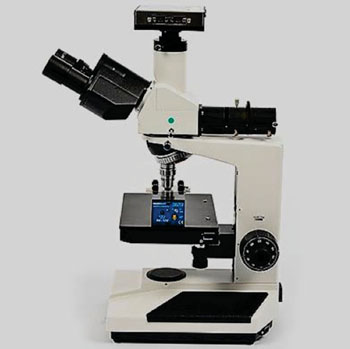Blood Test Biomarker Differentiates Early Stage Pancreatic Cancer
By LabMedica International staff writers
Posted on 14 Jul 2015
A new biomarker that successfully differentiated patients with pancreatic cancer from those with another pancreatic disease could lead to a blood test that detects pancreatic cancer early enough for curative surgery to be feasible.Posted on 14 Jul 2015
Pancreatic cancer has a very poor survival rate and ranks fourth as a leading cause of cancer deaths in the USA, where around 46,000 people a year are diagnosed with the disease. One reason the disease is so deadly is because by the time it is diagnosed, the tumor is too advanced for surgery to be an option as only about 15% of patients qualify for curative surgery.

Image: The NanoSight LM10 instrument used for nanoparticle analysis (Photo courtesy of Malvern Instruments).
Scientists at the University of Texas MD Anderson Cancer Center (Houston, TX, USA) and their colleagues obtained serum samples and tissue samples from patients with pancreatic cancer, serum samples only from patients with a benign pancreatic disease and from healthy donors, who had no evidence of acute or chronic or malignant disease and had no surgery within the past 12 months. The pancreatic discovery cohort from the University Hospital of Heidelberg (Germany) included 190 patients with a pancreatic ductal adenocarcinoma (PDAC), 18 patients with pancreatitis, eight patients with a benign serous cystadenoma and five patients with intraductal papillary mucinous neoplasm (IPMN).
The team used various techniques to show how a protein released by cancer cells into the bloodstream could be used to screen for early pancreatic cancer. As cancer cells release the protein, which is coded by the gene glypican-1 (GPC1), in small virus-sized particles called exomes. The exomes contain a mixture of DNA, RNA and proteins. Exosome samples from human serum were analyzed using the NanoSight LM10 instrument (NanoSight Ltd, Salisbury, UK). Serum CA19-9 and GPC1 protein levels in patients with pancreatic cancer, pancreatic cancer precursor lesion, or benign pancreatic disease and in healthy donors were assessed using the Cancer Antigen CA19-9 and GPC1 human enzyme-linked immunosorbent assays (ELISA).
Quantitative reverse transcriptase PCR (qRT–PCR) was performed on DNase-treated ribonucleic acid (RNA) using the Invitrogen SuperScript III Platinum One-Step Quantitative RT–PCR System (Life technologies; Carlsbad, CA, USA; www.lifetechnologies.com) on a 7300 Sequence Detector System (Applied Biosystems; Foster City, CA, USA). Analysis of the discovery cohort revealed that the levels of cancer exomes called GPC1+ crExos distinguish patients with histologically validated pancreatic cancer precursor lesions from healthy donors and patients with benign pancreatic disease. The test passed both measures of a successful diagnostic with top marks: specificity by correctly identifying patients with a disease and sensitivity by correctly ruling out those without the disease.
Raghu Kalluri, PhD, MD, a professor and lead author said, “GPC1+ crExos were detected in small amounts of serum from about 250 patients with pancreatic cancer with absolute specificity and sensitivity, importantly distinguishing patients with chronic pancreatitis from those with early- and late-stage pancreatic cancer. DNA, RNA and proteins can be isolated from cancer exosomes and isolated from stored specimen for further genetic and biological analyses. Therefore, cancer exosomes are not just a biomarker but isolating them provides a trove of cancer-specific information.” The study was published on June 24, 2015 in the journal Nature.
Related Links:
University of Texas MD Anderson Cancer Center
University Hospital of Heidelberg
NanoSight Ltd.













